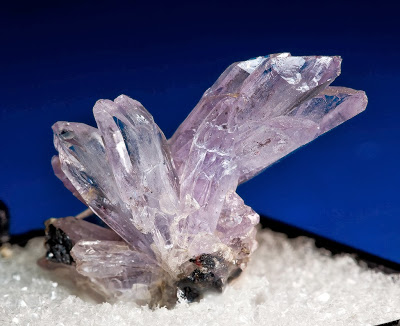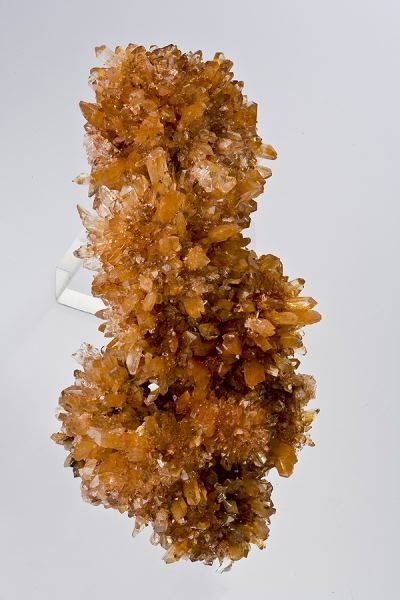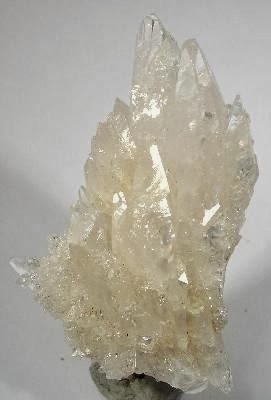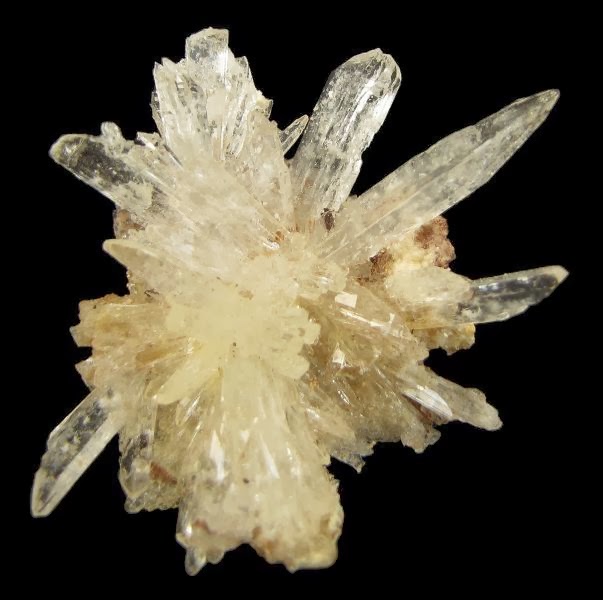
Chemical Formula: Ca3SO4Al2F8(OH)2 · 2H2O
Locality: Wagon Wheel Gap, Creed Quadrangle, Colorado, USA.
Name Origin: Named after its locality.
Creedite is a calcium aluminium sulfate fluoro hydroxide mineral with formula: Ca3SO4Al2F8(OH)2 · 2H2O. Creedite forms colorless to white to purple monoclinic prismatic crystals. It often occurs as acicular radiating sprays of fine prisms. It is translucent to transparent with indices of refraction of nα = 1.461 nβ = 1.478 nγ = 1.485. It has a Mohs hardness of 3.5 to 4 and a specific gravity of 2.7.
Creedite was first described in 1916 from the Creed Quadrangle in Mineral County, Colorado. It is a product of intense oxidation of ore deposits.
Geologic association
Creedite typically occurs with low-grade metamorphic rocks on a fluorite – calcite – quartz matrix or on a sulfide-matrix with its oxidized products. Creedite most commonly found in the form of creedite – carbonate – cyanotrichite – woodwardite – spangolite – kaolinite association. The other less common creedite association is creedite – limonite – kaolinite – hemimorphite – smithsonite – hydrozincite – aurichalcite. Creedite also occurs in skarn formation which usually has association with sulfides, spangolite, brochantite, linarite, limonite, cuprite, wad and kaolinite. In general, creedite usually found as two to three millimeters radial aggregates and less commonly as a single prismatic crystals up to one millimeters long.
Physical Properties
Cleavage: {100} Perfect
Color: Colorless, Violet, White.
Density: 2.71
Diaphaneity: Transparent to translucent
Fracture: Conchoidal – Fractures developed in brittle materials characterized by smoothly curving surfaces, (e.g. quartz).
Hardness: 3.5 – Copper Penny
Luminescence: Non-fluorescent.
Luster: Vitreous – Greasy
Streak: white
Photos :













